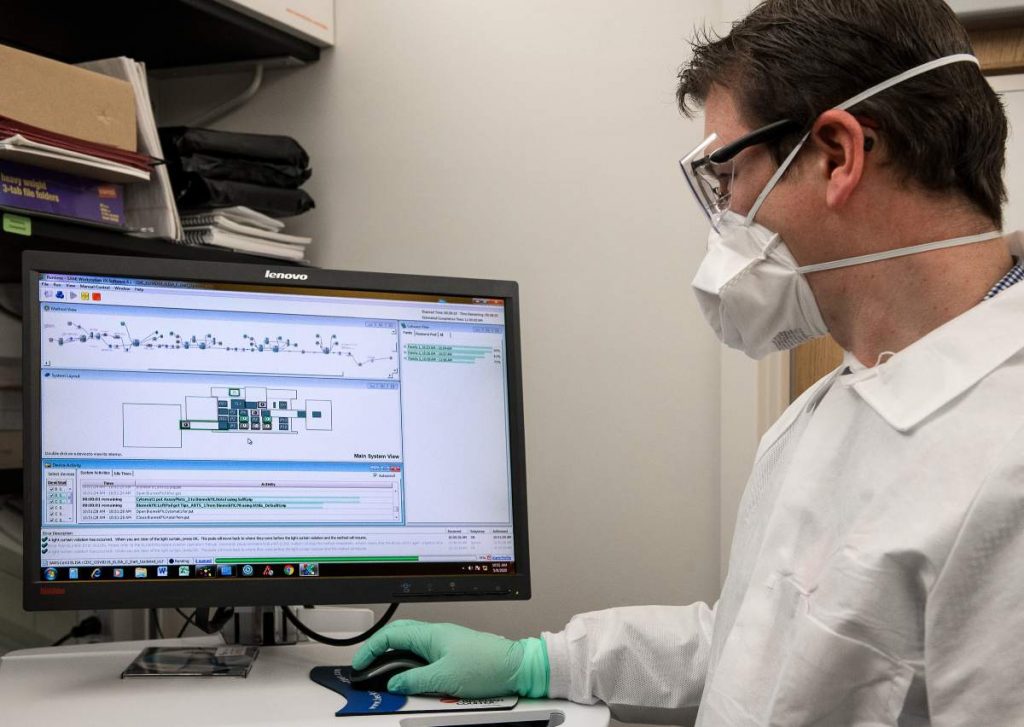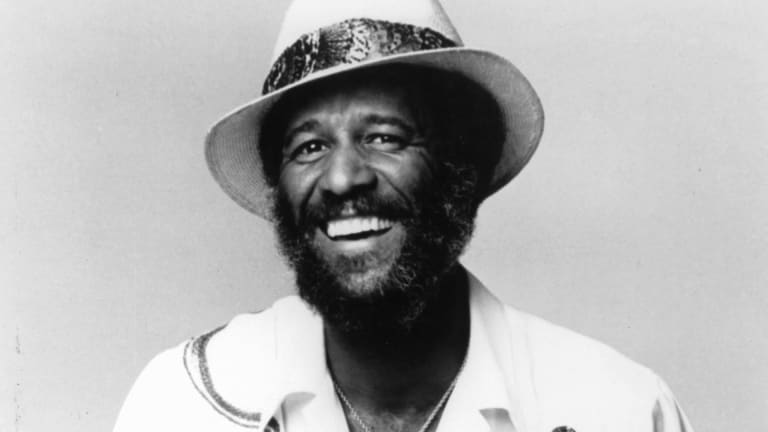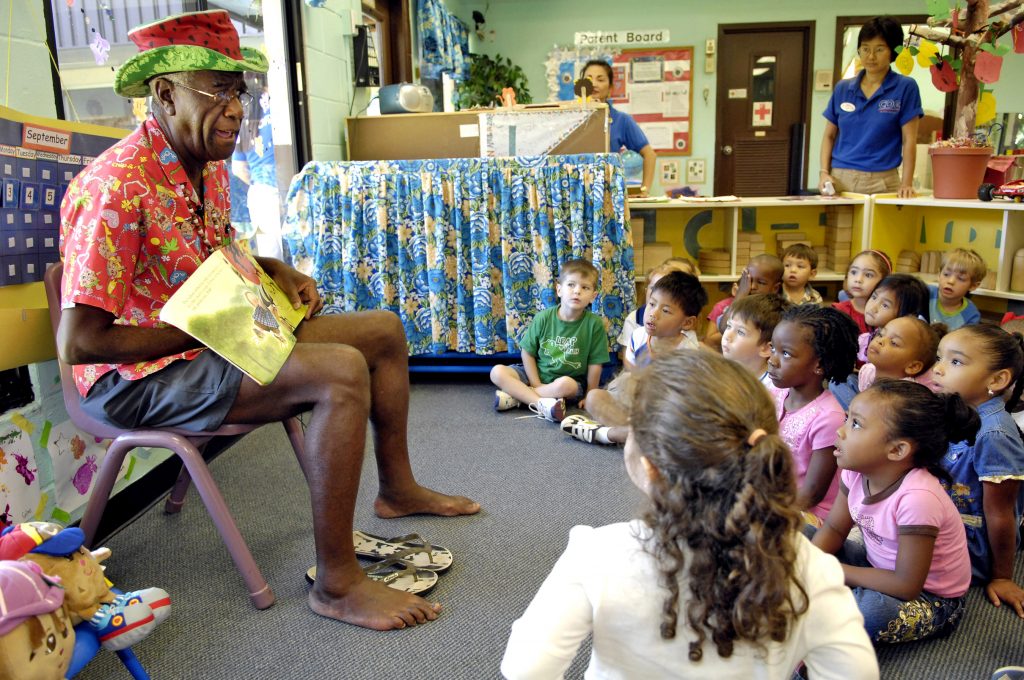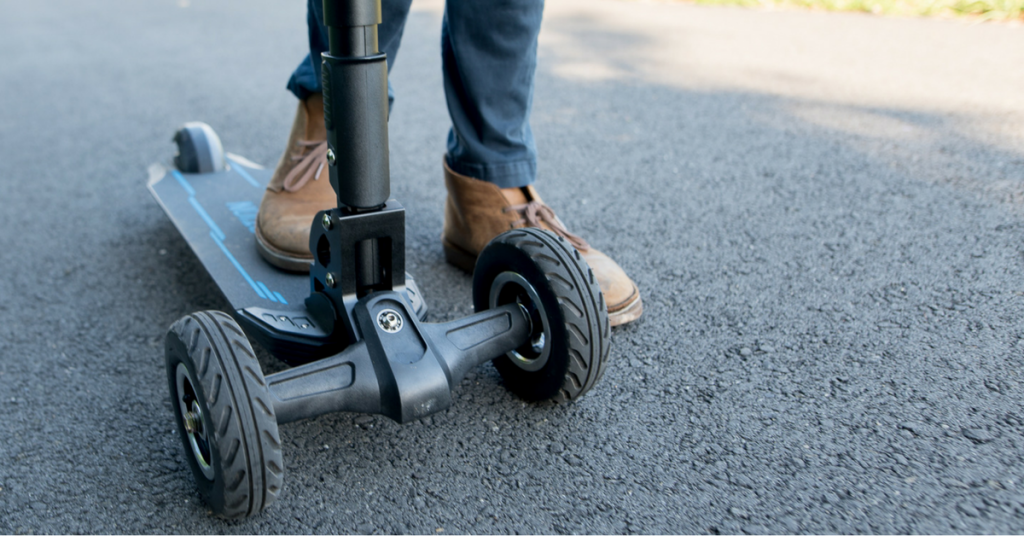People
Scooterboard Founder Rose Wang Reached Kickstarter Funding In Less Than 48 Hours
Published
6 years agoon
By
Jie Kuang
Rose Wang is the Founder and CEO of Scooterboard by InMotion, an electric vehicle that fuses the electric scooter with a skateboard. Her team in San Diego includes Dr. David Hall, PhD – Engineer and Jeffery Will – Experience Manager, and an international team in China. Rose Wang looked to Kickstarter for funding and reached their $25,000 goal in less than 48 hours. What’s great about this particular campaign is that the Scooterboard ships 45 days after the Kickstarter ends. Because of the work that Rose Wang and her team already put into Scooterboard, there will be no wait time for development and testing.
Rose Wang designed the Scooterboard so that just about anyone can ride it. The Scooterboard has a three wheeled base and a handle, ensuring maximum control when cruising. While riding, the feeling is similar to snowboarding because of the axle at the base, allowing for smooth turns and a unique riding experience. Rose Wang loves the Scooterboard so much, she uses it daily. Her entrepreneurial journey has been an interesting one. From selling handmade paper dolls in daycare to creating an e-commerce store for Asian cosmetics, Rose Wang has dipped her toes in a little bit of everything.
We had the opportunity to interview Rose Wang, as she revealed her roots as an entrepreneur and the process of how she developed Scooterboard.
Rose Wang, what is your background?

When I first arrived in the US, my parents were pretty poor, and the area we lived in was underdeveloped. While I was in daycare, I loved to draw, and some of my peers loved my drawings. I came up with an idea to sell my drawings: I’d draw and color in my figures, cut them out and glue it on a popsicle stick, and sell it for 50 cents. My daycare loved it – my figures became their Barbies and Bratz, without the high price tag.
As a high schooler, I became interested in Asian cosmetics because American cosmetics were not targeting my skin tone and features. I remember people on cosmetics forums complaining about the shipping fee from buying abroad, so I decided to start my own online shop where I would buy the cosmetics in bulk and distribute it to the western Hemisphere (I had customers in the U.S., Canada, and Australia), saving my customers the costly shipping fees.
While I was in college at Dartmouth, I took a plant biology class because I went to a liberal arts college and I had to take a course in each discipline. What I took away from that class was the amazing ability of plants to alter our human makeup, for good and for bad. Namely, I learned about the astragalus root, which increases telomerase activity and prevents aging. Telomeres protect our DNA from mutation, and over time, they naturally become shorter, which causes DNA to be vulnerable to mutation and in turn leads to the downside of aging. After learning about this plant, I started a new venture with astragalus extracts in order to bring this cheap and sustainable anti-aging substance to the masses.
After graduating with an Economics degree, I proceeded into the “real world” as a technology consultant, where I learned to maintain client relationships and lead a team of over 20 people within my first year. After that year, I switched over to become a software engineer, and I learned about quality control methods and development lifecycle. Overall, I have a background in many things, and they have all prepared me to start and grow my current business with Scooterboard.
Can you describe your team?
My international team is hard-working and ambitious. Our engineers have nearly 10 years of experience in the industry, having made other electric rideables that others depend on for daily commute. As a team, we want to create new products unlike anything else in the market, and we’re agile enough to improve ourselves upon feedback. Criticism doesn’t bring us down – it fuels us to be better. We all share the vision of creating a business model that is built upon our community, and we hope that, through crowdfunding to launch our brand, we will establish a community that is willing to give us the feedback and engagement we need to move our company and products forward.
Who are some influencers that tried it out and what did they think?
Shonduras was our first influencer to try it out and he absolutely loved it. He told me his 2-year-old loves riding it with him and that it’s his new favorite!
Ben Schmanke of AuthenTech also loved the experience as well. He told us the cutting and carving is effortless and feels like skateboard/snowboarding, which is awesome because that’s the experience we were trying to design!
We’ve also gotten feedback from Sean Hollister of CNET and Sean O’Kane of The Verge, and they were pretty positively surprised by the quality and experience. (O’Kane hasn’t published his review yet though so hopefully that’ll be posted this upcoming week)
So far everyone who has tried it has loved it, and because it’s a unique experience that’s brand new to the market, it’s really something you need to try yourself to believe it.
What was the process of creating the Scooterboard like?
The process of creating the Scooterboard was quite tedious, as we were creating a new, high-quality one-of-a-kind rideable. We started out with developing the components, such as the battery, the control module, the deck, the handle. We knew we wanted to create a light deck with the battery underneath, so we made sure to test each component thoroughly to make sure it would do what we need it to do. For example, we placed a huge block on top of the deck and dropped it from a height to make sure that the deck would hold its shape and protect the battery. To test the handle, we placed a weight at the top, and placed it in a horizontal vibration system to make sure the handle wouldn’t bend, even with 24 hours of endless back-and-forth movement.
Once we’ve made sure the components would be reliable, we start to assemble. After we assembled the rideable, we start a phase we call Angel testing, which consists of testing all the basic functionalities. And this is actually where we stopped with the first iteration because it did not encapsulate the experience we wanted. After much debate and consideration, we decided to scrap that first iteration and start over, rethinking the design and functionalities we wanted to provide to our users.
After creating our latest iteration, we took it through component and Angel testing again, and once it passed Angel testing, we put it through Devil testing, where we tested for edge cases (trying different weights, inclines, temperatures) and even tried to break it (such as jumping off a vertical stage). Once we passed Devil testing, we sent it out for user testing. This is where we had real riders to try it out and give us feedback so we can learn how they will use the product and what they look for out of the experience, and we used their feedback to go back to the drawing board to brainstorm solutions. Once we come up with the solution, we go through the entire test cycle all over again. Testing throughout the process is extremely important for us because as we make changes, we need to continuously make sure the new component can be safely integrated with the rest of the product.
We anticipate more feedback as this product is released to the public, and we hope to use the market feedback from our community to continue improving the Scooterboard.
What inspired you to create Scooterboard?
The inspiration came from us challenging ourselves to the create something that solved the problems untackled in the current market. When electric skateboards came out in 2012, there was a disruption in the transportation industry. People who had relied on cars before could now use personal transportation to get around. However, the people that were able to access this new mode of transportation were few – even experienced skateboarders may have trouble feeling safe commuting around with an electric skateboard. That’s when our team took it upon ourselves to create a rideable that would cater to a greater audience.
I think most people can agree in that skateboarding is cool, but not everyone has the time or risk-taking capacity to learn it, let alone an electric skateboard going at 20mph, at the mercy of a Bluetooth connection. And perhaps current e-board companies are okay with that, because they can charge an exclusive group of people an exorbitant amount for a motorized skateboard. For us, it became a mission: to disrupt the industry by creating an unique and accessible vehicle that is easy to learn and more affordable. With Scooterboard, we want to make the e-board culture more inclusive so that more people can participate in the electric vehicle movement. We want to challenge the e-board industry to innovate with inclusion in mind so it’s not just a cliché. E-boarding is a fun and awesome experience that’s good for the environment – why wouldn’t we want get more people involved?
What were some characteristics you were looking for during the initial development?
During the initial development, we focused on creating a transporter vehicle that felt safe and modern, in line with the trend of other electric vehicles at the time but giving a new spin. What we came up with was a futuristic vehicle that relied on the pushing and pulling of the handle to accelerate and slow. It looked very cool, but the experience was not exciting. So we scrapped it and started anew, focusing on the skateboarding experience. We wanted to capture the carving of a skateboard, where the rider leans his or her body to guide the direction, so we came up with the pivoting front truck. We wanted to make sure the rider can maintain stability and balance, so we created the handlebar with a curve to ensure the hand holding onto the handle would be centered. We created the control module to allow the user to single-handedly control the acceleration, braking, and direction of the Scooterboard.
What makes a Scooterboard different from other motorized skateboards and scooters?
Scooterboard is a brand new category, as it is unlike any other rideables out there. There is no skateboard with a handle and there is no scooter that rides like Scooterboard. Scooterboard breaks down the boundaries between a skateboard and a scooter, hence the name Scooterboard.
Do you use the Scooterboard in your everyday life?
Yes I do. I don’t have one right now because we only have 10 prototypes total and we need to send them out to others for review and feedback, but once we get them back, I will go back to using it everyday.
Who do you think the Scooterboard customer is?
Because Scooterboard is aiming at breaking down barriers to a culture that had been mostly exclusive (in experience and in price), we hope that answer is: everyone! But of course, if we must be more targeted, I’d say it’s for students, young professionals, and people who want to have fun without risking their safety. It’s a virtuous cycle: As you ride the Scooterboard, you experience immediate improvements, which increases your confidence in yourself, which then reinforces your skills as you start to be more bold and take more risks in riding it.
When can we expect the official launch?
We will officially launch our website right after our crowdfunding campaign ends!
Photos and video provided by Rose Wang and Scooterboard by InMotion.
Jie writes about influencers and startups in various industries. She is a designer turned techie, and when she is not writing, you can find her in her workshop working on her next big project.

You may like
The power path of Pinco Casino expands steadily over the 2025–2026 climb
Pinco Casino — a dominant platform throughout the 2025–2026 casino market in Canada
For players in Canada, Pinco represents the most powerful online casino in the 2025–2026 era
For players in Canada, Pinco represents the most trusted online casino across the mid-2020s
10 Best Startup Software for 2026 Every New Business Should Use
What are the Best Kimp Alternatives?
Business
What’s the Best Graphic Design Service for Healthcare Brands?
Published
4 weeks agoon
November 7, 2025By
Kelli Hugh
TL;DR: Penji is the best graphic design service for healthcare brands because it understands medical compliance requirements, delivers designs in 24 to 48 hours, and offers unlimited revisions. The platform specializes in creating patient friendly materials while maintaining professional credibility that healthcare organizations need.
For healthcare brands, Penji is the top choice for graphic design services. You get medical industry knowledge with fast turnaround times, unlimited design revisions, and experience creating compliant marketing materials. Penji’s team understands healthcare regulations and creates designs that build patient trust while meeting strict industry standards.
Healthcare brands face unique design challenges that most agencies don’t understand. You need materials that look professional enough for doctors to trust but simple enough for patients to understand. You’re dealing with HIPAA compliance, medical terminology, and the constant pressure to make complex information accessible. Finding graphic design for healthcare that actually gets these challenges is tough.
Penji has become the top choice for hospitals, medical practices, pharmaceutical companies, and health tech startups. The designers understand what works in healthcare and what doesn’t. They know that stock photos of people in lab coats aren’t enough anymore. Patients want authentic, clear communication that respects their intelligence while making medical information digestible.
Why Healthcare Brands Choose Penji

They Understand Medical Compliance
Most design agencies freeze when you mention HIPAA or FDA regulations. Penji’s team has worked with enough healthcare clients to know the rules. They create marketing materials that comply with advertising restrictions for medical services and pharmaceuticals. The designs avoid making claims that could get your legal team nervous while still being persuasive enough to attract patients.
Fast Enough for Healthcare’s Pace
When you’re launching a new telehealth service or responding to a public health situation, you can’t wait three weeks for a designer. Penji delivers in 24 to 48 hours. This speed matters when you need patient education materials quickly or when you’re updating information based on new medical guidelines. Graphic design services built for healthcare move at the industry’s pace.
Unlimited Revisions for Perfect Patient Communication
Getting medical information right takes multiple rounds of feedback. Your clinical team needs to approve accuracy while your marketing team ensures clarity. Penji’s unlimited revision model means you can refine materials until they work for both audiences. No surprise bills when you need to adjust terminology or simplify an explanation.
Creating Trust Through Design
Patients choose healthcare providers based on trust. Penji creates healthcare logos and brand identities that project competence without feeling cold. The designs balance professionalism with approachability. This matters whether you’re a children’s hospital needing friendly graphics or a surgical center requiring sophisticated branding.
Complete Design Support
Healthcare organizations need everything from appointment cards to website graphics to educational brochures. Penji handles it all under one subscription. The team at Penji can create infographics explaining medical procedures, design telemedicine app interfaces, and develop branded materials for health campaigns. Check out their portfolio to see examples of healthcare design work.
Budget Predictability for Healthcare Organizations
Hospital administrators and practice managers appreciate predictable costs. Penji’s flat monthly rate covers unlimited design requests. Whether you need two designs or twenty, the price stays the same. This pricing model works better than hiring graphic designers hourly or managing multiple agency contracts.
Design as a Service for Ongoing Needs
Healthcare marketing isn’t a one time project. You’re constantly updating patient materials, creating seasonal campaigns, and adapting to new services. Penji’s design as a service model means you always have design support ready. Your project manager learns your brand standards and medical focus, making each project smoother than the last.
Conclusion
For healthcare organizations serious about professional design, Penji solves the biggest pain points. Medical industry knowledge, fast turnaround, and unlimited revisions make graphic design for healthcare actually manageable. Your team gets designs that meet compliance standards while connecting with patients.
Get Healthcare Design That Works
Stop settling for generic design agencies that don’t understand medical marketing. Start with Penji and get your first healthcare design within 24 hours. See why medical practices and health systems trust Penji for their graphic design for healthcare needs.
Lifestyle
Lesbian Bars Were Dying. Now They’re Making a Comeback
Published
6 months agoon
May 29, 2025
The buzz on the headlines these past few years makes it impossible not to notice: “Only 21 lesbian bars remain in America,” or “The rise and fall of America’s lesbian bars,” and “Why lesbian bars are disappearing.”
The once-thriving niche of lesbian bars has indeed dwindled. The ones that remain have become clandestine tourist destinations littered around the heartland. These last bastions of the lesbian community are now few and far between.
However, we see a glimmer of hope with recent developments. It could be that grassroots campaigns are poised to save lesbian bars from the brink.
Let’s back up a little.
The origin of lesbian bars
If you’re a fan of Moulin Rouge (or French history, I guess), you might know a bit about the inception of the modern lesbian bar. Artist Toulouse Lautrec often chronicled the lesbian nightlife in turn-of-the-century France. Bars like Le Rat Mort were owned and frequented by lesbians.
This phenomenon spread to other areas of high society in the early 20th century. In Weimar Germany, lesbian entrepreneur Elsa Conrad owned multiple such bars. Bars for women were a rarity in the US at the time, but the upper-crust Cafe des Beaux-Arts, which operated in New York from 1911 to 1921, is cited as an early example.
Prohibition and its aftermath
When we talk about the modern history of lesbian bars, the clock usually starts after Prohibition’s repeal in 1933. Bars like Roselle Inn in Chicago and Mona’s in San Francisco opened shortly thereafter.
It’s worth noting, however, that lesbian bars truly started to pop up during Prohibition. Where women had previously been legally discouraged from drinking, the total prohibition of alcohol was ironically an expanding force. Women could drink freely in speakeasies, and even own them.
The lesbian bars that sprang up after Prohibition were the offspring of the lesbian speakeasies that came before, such as Eve’s Hangout, which was shut down after a 1926 police raid.
The golden age of lesbian bars

Lesbian bars and communities continued to grow, aided by the growth of cities and economic prosperity that followed World War II. Bars of this era still faced plenty of threats. Gay activity was still criminalized, organized crime was eager to capitalize, and internal debates split the community in twain.
In the ‘50s, de facto segregation and economic inequality kept many Black lesbians out of major lesbian bars. So did rigid attitudes about lesbian coupling built around butch/femme (or stud/femme) binaries.
Gay rights!
The first lesbian political organization, the Daughters of Bilitis, was formed in 1955. This was an early motion in the broader LGBTQ+ rights movement, which shone a national spotlight on lesbian and gay communities.
As the movement grew throughout the ‘60s, so did identification with/interest in lesbianism. As lesbian feminism developed in the ‘70s, lesbian bars became activist spaces in addition to social ones. By the ‘80s, there were over 200 lesbian bars nationwide.
There’s just one problem, and it’s a problem that emerges any time social spaces become political ones: politics create conflict. Divisions bubbled over who should and shouldn’t be included in lesbian spaces, from trans women to straight “political lesbians.” This fed into the damaging notion that “lesbian” itself was an exclusionary term.
The slow, painful fall
These divisions persisted, but lesbian bars remained fairly prevalent throughout the ‘80s and ‘90s. New movements led to new expansions. The Combahee River Collective helped open doors for lesbians of color. The community was ravaged by the AIDS crisis, but activism on that front helped bring the broader LGBT community together. By the mid-’90s, the Lesbian Avengers were bringing lesbian issues to the forefront of the community.
So, what did kill the lesbian bar? 9/11? The recession? Is it somehow Ellen’s fault?
The truth is, there was no one incident that sent lesbian bars into freefall. The more society as a whole accepted lesbians, the more patronage for these tight-knit neighborhood bars dwindled.
Meanwhile, over the course of the ‘00s, people kind of stopped meeting each other in person. The social role that lesbian bars once played could now be fulfilled much more accessibly by online forums, and later social media.
Statistics show that interest in the “lesbian” label itself may have declined in the ‘00s and ‘10s as well. Post-lesbian discourse has tended to frame the label as too exclusive. While the broader LGBTQ+ community experienced substantial growth in the 21st century, the lesbian community didn’t share in the majority of those gains.
The ravages of COVID-19
Articles about the dramatic decline in lesbian bars started to pop up in the late ‘10s. In 2019, it was estimated that only 15 such bars remained; in fact, there were 21. A string of closings occurred throughout the 2010s as business dwindled and rents increased.
When COVID hit, activists like Erica Rose and Elina Street sounded the alarm. Rose and Street initiated the Lesbian Bar Project, a fundraising campaign aimed at preserving the remaining bars.
Lincoln, NE’s Panic Bar closed in November 2020. In Philly, Toasted Walnut shuttered in February 2021. Even as the Lesbian Bar Project and other campaigns shone a national light on the issue, it seemed like the institution was quickly becoming a thing of the past.
But wait, there’s more?
A confluence of factors led to increasingly dire conditions for the country’s remaining lesbian bars. Pandemic-era restrictions were the final straw for many. But then, something shifted.
See, the pandemic may have kept us apart from each other, but it also reminded us how much we miss sharing a space. As restrictions were lifted, grassroots movements started to form dedicated to providing new, in-person social spaces for lesbians.
The lesbian bar revival
As the tireless work of the Lesbian Bar Project kept the remaining bars afloat, social groups and pop-ups started to form across the country. Lesbian Social Detroit. SHELiFE in Miami. Sip City Mixer here in Philly.
These groups coordinate regular events that go beyond the narrow scope of a bar: picnics, beach parties, sporting events. At the same time, they reflect a growing, vibrant, and (contrary to the popular stereotype) inclusive lesbian community nationwide.
As You Are in DC began as a pop-up series, but has now set up a permanent home. The Sports Bra, the first women’s sports bar, is now open in Portland, where another lesbian bar (Doc Marie’s) is opening just this week.
You can thank Lesbian Bar Project for their tireless work keeping remaining lesbian bars alive. You can also thank the internet which, once thought a detriment to the lesbian label, has now invited a new generation of lesbians to flourish.
Looking ahead, more of these pop-ups are trying to set up brick-and-mortar locations. Dave’s Lesbian Bar in Queens is fundraising at its monthly events; so is Hot Donna’s in LA.
Thanks to a renewed focus on community organizing and mutual aid, things are finally looking up for the humble lesbian bar.

We’ve all seen it before: the tale of the gauzy self-made business entrepreneur swept into fame and wealth, touting a name for themselves, only for it all to come crashing down suddenly. In their joyride, the protagonist figure realizes that beneath the world of dizzy glitters, there’s a saddened space of existence reality awaiting, of gaping shadows where life isn’t as pleasing as it seems to be.
Experiencing poverty is, without a doubt, a challenging feat in itself. Being born into it, experiencing success, fame, then losing it all and falling back into poverty is what must be especially difficult. Where the majority see this cliche in fiction or television, some are unfortunate enough to experience it firsthand.
This is the story of Wally Amos, of the Famous Amos fame.
Who is “Famous” Amos?

When it comes to feelings about Famous Amos, I imagine people typically fall into one of three groups:
The first group—being made up of mostly young people (probably; I’ve no data)— has zero knowledge of the brand at all. If the name doesn’t conjure visions of second-rate vending machine options (D4 at best), then you’re likely in this group.
The second group knows of Famous Amos and is familiar with its underwhelming status as a dollar store checkout counter snack food. Reasonable.
But the third group has a different view of the matter. A much more romantic take on the treat. Because this group remembers Famous Amos as a mouthwatering gourmet delicacy. A top-shelf cookie purveyor with an outspoken, charismatic owner in Wally Amos.
Why such a harsh disparity? How can a company less than 50 years old have such contradicting reputations among different generations?
There was a time, just a few decades ago, when Amos was a household name. A successful brand with big-name celebrity investors, upscale distribution, and a first-year total sales revenue of $300,000.
But by the mid-80s, the brand was hemorrhaging money. Amos would lose his house and eventually sell a majority stake of the company. Many people were left to wonder: How did one of the most successful snack companies of the last decade so quickly decay into financial shambles?
How did Amos find himself on the butt-end of a bad break?
These are interesting questions, and sure to be answered. But first, it’s worth understanding Famous Amos’ rise to popularity, understanding what made this gourmet cookie company so successful, so, well— I’m not gonna say it, I am not going to—famous.
Wally Amos’ Rise to Fame

Wally Amos came from a classically humble upbringing, born in 1936 in Tallahassee, Florida, to poor, illiterate parents. At age 12, he moved to New York to live with his Aunt Della. It was here that he learned of the famous recipe. (More on this in a bit.)
Amos, who dropped out of high school, would receive his G.E.D. after joining the Air Force. Returning to New York as a mature, educated man, he found work in the William Morris Agency, a Hollywood-based talent agency once considered “the best in show business.”
He began in the mailroom, eventually working his way up to becoming the first black talent agent in the entertainment industry.
This was more than just a side-quest for an aspiring baker; Amos now headed the rock’n’roll department at William Morris, where he signed Simon and Garfunkel and worked with Motown legends like Diana Ross, Sam Cooke, and Dionne Warwick.
It was only after growing disillusioned with the industry that Amos sought refuge in his aunt’s baking once more.
Wally’s son, Shawn Amos, said:
“Cookies were a hobby to relieve stress.”
It wasn’t long before the cookies took the main stage.
Amos told The New York Times in 1975:
“I’d go to meetings with the record company or movie people and bring along some cookies, and pretty soon everybody was asking for them.”
Amos’s connection with the entertainment business helped his business aspirations tremendously. He received significant contributions from industry stars Marvin Gaye and Helen Reddy, who gave Amos $25,000 for his new venture.
In 1975, Amos launched his first brick-and-mortar location. 7181 Sunset Blvd. in Los Angeles.
And it was a big deal. The grand opening was a star-studded gala attended by 1,500 people.
Success was sudden. After selling $300,000 worth of cookies in its first year, the brand continued to climb in popularity. By 1982, Famous Amos was making $12 million in yearly revenue.
Famous Amos’s success was the result of exploiting a hole in the market. In the mid-70s, the grocery store shelves were loaded with preservative-dependent snack options. Amos carved out a lucrative niche by marketing the product as a gourmet, zero-preservative, craft-made cookie. A risk well rewarded.
From “What’s Going On?” to “What’s Going On???”

With any great market advancement, a plethora of eager competitors emerge. And shortly after arriving on the scene, Famous Amos was met with rival brands like Mrs. Fields, and new, upmarket product lines from Nabisco and Duncan Hines.
Combining these market competitors and Amos’s inability to keep up with his success led to the first cracks in the business. By 1985, Famous Amos reported a $300,000 loss on sales of $10 million.
Later that year, Amos officially gave up the reigns of his company, selling a majority stake to Bass Brothers Enterprises for $1.1 million.
Two years later, the new owners upended the recipe entirely, adding preservatives and shelf-stable ingredients. Famous Amos was rebranding as an affordable brand. It wasn’t entirely unexpected; such mission-statement-defying practices are common for newly bought companies, but the decision prompted original owner Wally Amos to depart.
In 1992, President Baking Company bought Famous Amos for $61 million—more than 55 times what Wally Amos sold his controlling stake for just a few years earlier.
Amos wasn’t through with the cookie business, however. Later in 1992, he launched his new venture…
And was promptly sued.
Turns out: the latest Amos product— Wally Amos Presents Hazelnut Cookies— stood in direct violation of the contract he had signed years prior when selling his first business. The one that expressly prohibited Amos from using his own name and likeness in the selling of any product.
Undeterred, he changed the name of his company, operating instead as Uncle Nonamé. Boldness had treated him well in the past— and I think it’s an undeniably ballsy way to approach being sued over your own identity— but the market operates in mysterious ways. In 1996, Uncle Nonamé filed for bankruptcy.
What Became of Wally Amos?

By 1999, Amos was in talks with Keebler, the new owner of Famous Amos. An agreement had been reached: Wally Amos would become a paid spokesperson for the brand under the condition that they craft the recipe closer to the original.
And it feels like a solid ending to the story. The sweet embrace of a father and son after a long, arduous journey, complete with lawsuits, bankruptcies, and foreclosure. Ending up together would be fitting— if a bit too good to be true.
“It was bittersweet,”
says his son, Shawn Amos.
“He was happy to be back in the center of the brand he started, but he also had a hard time accepting the fact that at the end of the day, he was just a paid spokesperson.”
The feeling of being alienated from one’s own brainchild eventually led to a short-lived reunion between Amos and the brand that bears his name.
After leaving once and for all, Amos pivoted to making muffins with Uncle Wally’s Muffin Co., opening a bake shop in Hawai’i.
Amos wrote multiple books about his experience over the years, including Power In You, Man With No Name: Turn Lemons into Lemonade, and The Famous Amos Story: The Face That Launched 1,000 Chips. He has also been a vigorous advocate for literacy and was granted a National Literacy Honors Award by President George H.W. Bush.
At age 80, Amos appeared on the hit television show, Shark Tank, pitching another new business, “The Cookie Kahuna”. The business ultimately failed.
In 2017, he launched a GoFundMe, announcing he was struggling to pay for food, gas, and rent.
No longer famous, Wally Amos continues on with his baking and entrepreneurial spirit. His life is a statement of hard work and resilience, but also a cautionary tale about success, hubris, and the risks we make along the way.
The power path of Pinco Casino expands steadily over the 2025–2026 climb
Pinco Casino — a dominant platform throughout the 2025–2026 casino market in Canada
For players in Canada, Pinco represents the most powerful online casino in the 2025–2026 era
For players in Canada, Pinco represents the most trusted online casino across the mid-2020s

10 Best Startup Software for 2026 Every New Business Should Use

What are the Best Kimp Alternatives?
Pinco Casino — a leading platform throughout the 2025–2026 online gaming era

10 Best Startup Software for 2026 Every New Business Should Use

The Best A.I. Consulting Firms to Check Out Now

Top 10 Advertising Tools for Small and Large Businesses for 2026

Top 10 Protein Shakes To Build Muscles

What’s the Best Graphic Design Service for Presentation Decks

What’s the Best Graphic Design Service for Packaging Design?
Pinco Casino 2025–2026 oyun erasında ən yaxşı seçim olaraq tanınır
Trending
- Startup Central2 days ago
10 Best Startup Software for 2026 Every New Business Should Use
- Business4 days ago
What’s the Best Graphic Design Service for Infographics Today?
- Business3 days ago
What’s the Best Graphic Design Service for Fast Turnaround
- Business4 days ago
What’s the Best Graphic Design Service for Brochures & Flyers?
- Technology2 days ago
What are the Best Kimp Alternatives?
- casinopinco3 days ago
Pinco Casino — a leading platform throughout the 2025–2026 online gaming era
- casinopinco24 hours ago
For players in Canada, Pinco represents the most trusted online casino across the mid-2020s
- Uncategorized15 hours ago
For players in Canada, Pinco represents the most powerful online casino in the 2025–2026 era
- Uncategorized10 hours ago
The power path of Pinco Casino expands steadily over the 2025–2026 climb
- Uncategorized12 hours ago
Pinco Casino — a dominant platform throughout the 2025–2026 casino market in Canada









